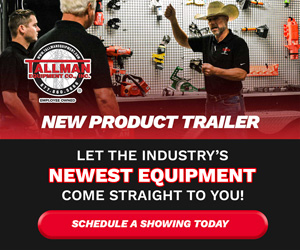Is decentralization the answer to extreme weather events fueled by global climate change?
Officially autumn begins in September, and it can’t come soon enough! Copernicus, the European Union’s climate change service said the Earth saw the hottest June on record. That was followed by several U.S. climate tracking agencies reporting the planet recorded a series of the highest average global temperatures ever reach in July. The sizzling temperatures were reported in North America, Europe, and Asia, but heat wasn’t the only extreme weather events making headlines in 2023.
There were wildfires, bomb cyclones, floods of biblical proportions, and more including concern about the power grid’s ability to provide electricity. While some portions of the globe were coping with prolonged heatwaves and lingering heat domes (i.e., a high ridge of hot stagnant air), others grappled with dangerous storms that included extensive flooding. It hasn’t been a good year for the power grid with the extreme weather conditions.
Summer saw peak demand records continuously being broken, but the power kept flowing. Of course there were bumps in the road with outages and near outages affecting large numbers of customers. Experts are concerned that this summer’s heat stress will have future consequences on the power grid. If you’re interested in real-time outage tracking, the PowerOutage.us website is a good place to see what’s taking place across the U.S. at any given time.
Heatstroke or Heat Exhaustion
The effects of extended heatwaves are insidious because they tend to be cumulative. According to a report from the Department of Energy (DOE) extreme heat is listed as one of the leading threats to reliability and resilience to the power system. This summer some portions of the power system experienced the equivalent of a heat exhaustion whereas others suffered what could only be called heatstroke, but there’s a resolution – the decentralized power system.
One of the most prominent technologies for decentralization is microgridation (i.e., the integration of microgrids in the power system). Microgridation puts the power source close to the load, which makes a utility’s system more robust. It does it without resorting to the old-school tradition of “more wire in the air.” Conventional approaches such as building transmission, adding distribution, or installing generation plants need help to get the job done. Today’s microgrids can provide that boost a utility’s power network when it comes to climate resiliency.
Before moving on, it’s a good idea for everyone to be on the same page. What is a microgrid? According to NREL (National Renewable Energy Laboratory), “A microgrid is a group of interconnected loads and distributed energy resources that acts as a single controllable entity with respect to the grid. It can connect and disconnect from the grid to operate in grid-connected or island mode.”
According to a study performed by the marketing company Reliable Research Reports, “the global microgrid market is expected to grow at a CAGR (compound annual growth rate) of 6% during the forecast period of 2023-2030.” They went on to say, “The global microgrid market size was estimated at US$ 29.99 billion in 2023 and it’s expected to surpass US$ 85.7 billion by the end of 2030.” The paper pointed out that “some of key players in the market include ABB, NEC, GE, Aquion Energy, Echelon, Raytheon, S & C Electric Co, Eaton Corporation, Sunverge Energy, Siemens, Toshiba, General Microgrids, and Lockheed Martin, among others.”
Microgrid technology has matured to the point it’s adaptable to any requirement needed by a utility for their power network. They can be installed or either side of the meter and their sizes can be wide-ranging. Also, microgrids are a valuable tool for utilities adopting net-zero goals in the transition from fossil fuels to clean energy alternatives. It all starts with the addition of distributed energy resources (DERs) including battery energy storage systems (BESS).
Continue Reading on T&D World







0 Comments